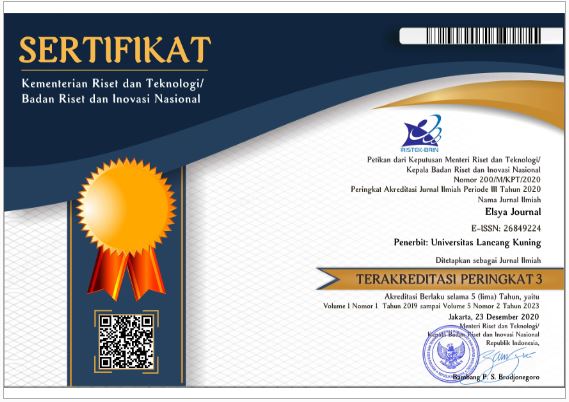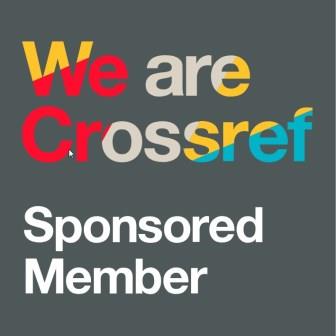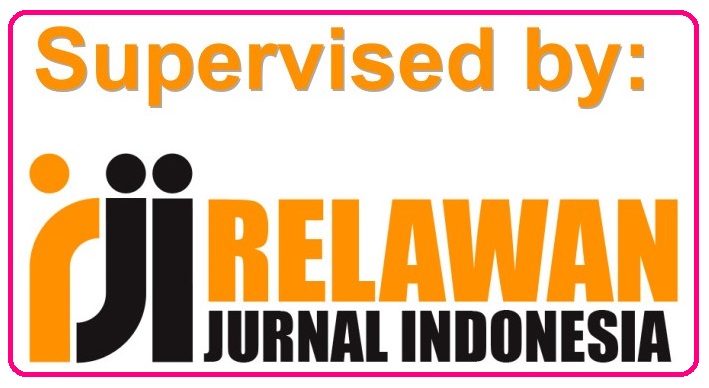Demystifying the Hegemony of the English Language: Scrutiny of ‘Gak Bisa Bahasa Inggris!’ Advertisement within a Semiotics Lens
Abstract
Due to its overarching status and power, the English language has dominated and influenced nearly in various means of communication, and one of which is instantiated in advertisements. However, studies concerning the hegemony of the English language represented in an advertisement were found to be under-explored. Thereby, the present study aimed to scrutinise the domination and power of the English language, particularly in Indonesia, represented in one of the advertisements, which is a remake video of a viral video from 2017 to date, entitled ‘Gak Bisa Bahasa Inggris!’ from a Youtube Channel named Pahamy. Semiotic analysis was employed to analyse the advertisement. The findings revealed only five out of eight types of syntagma found comprising descriptive syntagma, bracket syntagma, episodic syntagma, autonomous shot, and scene. The present study concluded that it seemed not possible to have the eight syntagmatic types in a very short advertisement video, and some signs found in the advertisement could be used to shed light on the hegemony of the English language in Indonesia, which might result in either positive or negative effect; hence, any thoughtful consideration and action through multilingual education was advocated to solve or at least mitigate this issue.
Downloads
References
Afful, E. A. (2014). Heterogeneity in the importance of English-speaking ability in determination of employment status by demographic subgroups in the United States. In Munich Personal RePEc Archive (MPRA). The Munich University Library. https://mpra.ub.uni-muenchen.de/58767/
Afsheen, S., & Eijaz, A. (2017). What makes an educational advertisement campaign successful : A case study of Zara Sochiye. Journal of Media Studies, 32(2), 61–88.
Akujobi, O. S. (2019). The English language hegemony and sociolinguistic effects on indigenous Nigerian languages. Journal of African Studies and Sustainable Development, 2(2), 1–14.
Al Mar’atus, A., & Syahrizal, T. (2021). The analysis illocutionary acts of ustadz Hanan Attaki Youtube channel. PROJECT (Professional Journal of English Education), 4(1), 47–54. https://doi.org/10.22460/project.v4i1.p47-54
Ali, M. M. (2018). Analisis gender film Salah Bodi melalui semiotika Christian Metz. Gelar: Jurnal Seni Budaya, 16(1), 59–76. https://doi.org/10.33153/glr.v16i1.2340
Andonova, E., & Taylor, H. (2012). Nodding in (dis-) agreement: a tale of two cultures. Cognitive Processing, 13(1), 79–82. https://doi.org/10.1007/s10339-012-0511-7
Baker, W. (2018). English as a lingua franca and intercultural communication. In J. Jenkins, W. Baker, & M. Dewey (Eds.), The Routledge handbook of English as a lingua franca (pp. 25–50). Routledge.
Baker, W., & Ishikawa, T. (2021). Transcultural communication through global Englishes. In Transcultural Communication Through Global Englishes. Routledge. https://doi.org/10.4324/9780367809973
Benson, C. (2017). Multilingual education for all: Applying an integrated multilingual curriculum model to low-income contexts. Multilingualisms and Development, 101–114.
Bestari, A. C. Y., Mayekti, M. H., & Faiza, D. (2020). Short documentary film implementation at Al Ikhsan Beji Islamic boarding school as a media to improve English speaking in the midst of the American popular culture hegemony. Jurnal Sinestesia, 10(1), 22–31.
Briandana, R. (2019). Representation of political ideology in advertising: Semiotics analysis in Indonesia television. International Journal of English Literature and Social Sciences, 4(3), 764–775. https://doi.org/10.22161/ijels.4.3.31
Budiwiyanto, A. (2021). Urgensi penyusunan kamus dwibahasa Indonesia-Inggris untuk penutur Bahasa Indonesia. Badan Pengembangan Dan Pembinaan Bahasa Kementrian Pendidikan Dan Kebudayaan. http://badanbahasa.kemdikbud.go.id/lamanbahasa/content/urgensi-penyusunan-kamus-dwibahasa-indonesia-inggris-untuk-penutur-bahasa-indonesia
Cayestu, T. A. A. B., & Pasaribu, T. A. (2020). Ellipsis on gadget advertisements in T3 magazine. JELTL (Journal of English Language Teaching and Linguistics), 5(1), 105–119. https://doi.org/10.21462/jeltl.v5i1.390
Cenoz, J. (2009). Towards multilingual education: Basque educational research from an international perspective. Multilingual Matters. https://doi.org/10.21832/9781847691941
Charles, C. (2018). Backtalk: Visual language and the representation of black women. Florida Antlantic University.
China Daily. (2017). Mandarin is now rapidly becoming a global language. http://www.chinadaily.com.cn/opinion/2017-10/13/content_33190150.htm
Creswell, J. W. (2014). Research design: qualitative, quantitative, and mixed methods approaches (Fourth). SAGE Publications Ltd.
Cystal, D. (2003). English as a global language. In The Palgrave Handbook of Economics and Language (2nd Ed.). Cambridge University Press. https://doi.org/10.1007/978-1-137-32505-1
Dahl, G. R. (2007). Advertising for dummies (2nd Editio). Wiley Publishing, Inc.
Dearden, J. (2014). English as a medium of instruction-a growing global phenomenon. British Council.
Devereux, G. (1966). The exploitation of ambiguity in Pindaros O. 3.27. Rheinisches Museum Für Philologie, 4, 289–298.
Dewi, R. K. (2021). Video viral pelajar “Enggak bisa Bahasa Inggris”, ini kisahnya hingga dapat beasiswa. https://www.kompas.com/tren/read/2021/01/23/103000465/video-viral-pelajar-enggak-bisa-bahasa-inggris-ini-kisahnya-hingga-dapat?page=all
Dubard, C. A., & Gizlice, Z. (2008). Language spoken and differences in health status, access to care, and receipt of preventive services among US Hispanics. American Journal of Public Health, 98(11), 2021–2028. https://doi.org/10.2105/AJPH.2007.119008
Dwita, D., & Wijayani, I. (2018). Gender equality in media television (semiotics analysis of Fair and Lovely advertisementissue of marriage or master degree). Komuniti: Jurnal Komunikasi Dan Teknologi Informasi, 10(1), 44–53.
Feramayasari, K., & Wiedarti, P. (2020). A critical discourse analysis on Shopee 12.12 Birthday Sale advertisement. JELTL (Journal of English Language Teaching and Linguistics), 5(1), 121–130.
Florina, I. D. (2014). Representasi represi orde baru terhadap buruh (studi saluran komunikasi modern Christian Metz dalam film Marsinah) (Cry Justice). Journal of Rural and Development, 5(2), 181–192.
Formentelli, M. (2017). Taking stance in English as a lingua franca: Managing interpersonal relations in academic lectures (Vol. 2). Cambridge Scholars Publishing.
Gall, M. D., Gall, J. P., & Borg, W. R. (2003). Educational research: an introduction (Seventh). Pearson Education, Inc. https://doi.org/10.4324/9781003008064-1
Graddol, D. (2000). The future of Englishes?: A guide to forecasting the popularity of the English language in the 21st century. The British Council. https://doi.org/10.1017/S0266078400010816
Gramsci, A. (1971). Selections from the prison notebooks (Q. Hoara & G. N. Smith (eds.)). International Publishers. https://doi.org/10.1080/10286630902971603
Grimaldi, J., Hadeler, D., Richards, S., Berger, R., Zimmerman, J., Bromley, E. W., Dapper, G. S., Toth, M., Santry, C., & Allen, P. S. (2003). Inside the minds: The art of advertising: CEOs from BBDO, mullin advertising & more on generating creative campaigns & building successful brands. In Building (Vol. 2003). Aspatore Books.
Guba, E. G. (1981). Criteria for assessing the trustworthiness of naturalistic inquiries. Educational Communication & Technology, 29(2), 75–91. https://doi.org/10.1007/BF02766777
Hasan, A. D. (2018). Aesthetic study and symbolic meaning of decoration in traditional wedding. International Conference on Business, Economic, Social Sciences and Humanities (ICOBEST 2018), 225, 332–335. https://doi.org/10.2991/icobest-18.2018.110
Hoffman, B. Y. (2016). Online responses to a multilingual Super Bowl ad: is ‘America the Beautiful’ by any other language still America, the beautiful? International Journal of Multilingualism, 13(2), 213–229. https://doi.org/10.1080/14790718.2015.1094075
Israel, J. I. (1995). The Dutch Republic: Its rise, greatness and fall, 1477-1806: Oxford history of early modern Europe. Oxford University Press.
Jewitt, C., Bezemer, J., & O’Halloran, K. (2016). Introducing multimodality. Routledge. https://doi.org/10.4324/9781315638027
Jones, S. E., & Yarbrough, A. E. (1985). A naturalistic study of the meanings of touch. Communication Monographs, 52(1), 19–56. https://doi.org/10.1080/03637758509376094
Jonesa, R., Jufrizal, & Wahyuni, D. (2018). The hegemony of English in Indonesian movies titles 2016. E-Journal of English Language & Literature, 7(4), 396–404.
Kachru, B. B. (1986). The power and politics of English. World Englishes, 5(2–3), 121–140. https://doi.org/10.1111/weng.1986.5.issue-2-3
Kachru, B. B. (1988). The sacred cows of English. English Today, 4(4), 3–8. https://doi.org/10.1017/S0266078400000973
Kachru, B. B. (1994). Englishization and contact linguistics. World Englishes, 13(2), 135–154. https://doi.org/10.1111/j.1467-971X.1994.tb00303.x
Kachru, B. B. (1996). World Englishes : Agony and ecstasy. Journal of Aesthetic Education, 30(2), 135–155.
Kachru, B. B. (2001). World Englishes and culture wars. In T. C. Kiong (Ed.), Ariels: Departures and returns: Essays for Edwin Thumboo (pp. 392–414). Oxford University Press. https://doi.org/10.1002/9780470757598.ch25
Kehoe, M. von L. (2008). The paradox of post-colonial historic preservation: Implications of Dutch heritage preservation in modern Jakarta. E-Polis: Online Student Journal of Urban Studies, 2, 1–20. https://uwm.edu/wp-content/uploads/sites/231/2016/01/2008KehoeArticle.pdf
Kirkpartrick, A. (2011). English as a medium of instruction in Asian education (from primary to tertiary): Implications for local languages and local scholarship. In L. Wei (Ed.), Applied linguistics: Review 2 2011 (pp. 99–120). Walter de Gruyter GmbH & Co. Kg. http://scholar.google.com/scholar?hl=en&btnG=Search&q=intitle:No+Title#0
Landry, R., & Bourhis, R. Y. (1997). Linguistic landscape and ethnolinguistic vitality: An empirical study. Journal of Language and Social Psychology, 16(1), 23–49. https://doi.org/10.1177/0261927X970161002
Lauder, A. (2008). The status and function of English in Indonesia: A review of key factors. Makara, Sosial Humaniora, 12(1), 9–20. https://doi.org/10.7454/mssh.v12i1.128
Maguth, B. M., Dustman, J., & Kerr, M. (2013). Reexamining the Statue of Liberty: Different perspectives on history and the promise of America. Social Studies and the Young Learner, 25(4), 9–14. papers3://publication/uuid/4DAF0281-5815-44EE-947B-751C35662EF8
Manan, S. A., David, M. K., Dumanig, F. P., & Channa, L. A. (2017). The glocalization of English in the Pakistan linguistic landscape. World Englishes, 36(4), 645–665. https://doi.org/10.1111/weng.12213
Master, P. (1998). Positive and negative aspects of the dominance of English. TESOL Quarterly, 32(4), 716–727. https://doi.org/10.2307/3588002
McKinney, C. (2007). ‘If I speak English, does it make me less black anyway?’‘Race’ and English in South African desegregated schools. English Academy Review, 24(2), 6–24. https://doi.org/10.1080/10131750701452253
Mehrabian, A. (1969). Methods & designs: Some referents and measures of nonverbal behaviour. Behavior Research Method and Instruction, 1(6), 203–207.
Merriam, S. B. (2009). Qualitative research: A guide to design and implementation (2nd Editio). John Wiley & Sons, Inc. http://dx.doi.org/10.1016/j.encep.2012.03.001
Metz, C. (1991). Film language: A semiotics of the cinema. The University of Chicago Press.
Mianda, G. M. (2014). Reading Awa Thiam’s La parole aux Négresses through the lens of feminisms and hegemony of English language. Atlantis: Critical Studies in Gender, Culture & Social Justice, 36(2), 8–19.
Mizuta, A. (2009). The unchanged images of English in changing Japan: From modernization to globalization. Intercultural Communication Studies, 18(2), 38–53.
Modiano, M. (2001). Linguistic imperialism, cultural integrity, and EIL. ELT Journal, 55(4), 339–347. https://doi.org/10.1093/elt/55.4.339
Morton, J. L. (2021a). The meaning of blue: Color matters. https://www.colormatters.com/the-meanings-of-colors/blue
Morton, J. L. (2021b). The meaning of orange: Color matters. https://www.colormatters.com/the-meanings-of-colors/orange
Morton, J. L. (2021c). The meanings of colors: Color matters. https://www.colormatters.com/color-symbolism/the-meanings-of-colors
OECD. (2016). Education at a glance : OECD indicators 1997. OECD Publishing. http://www.oecd.org/dataoecd/41/25/43636332.pdf
Pahamy. (2021). “Gak Bisa Bahasa Inggris!” https://www.youtube.com/watch?v=nLRD91PpiJk
Pennycook, A. (2017). The cultural politics of English as an international language. Routledge.
Prasad, B. B. N. (2017). Stylistic and linguistic features of English in advertisements. National Conference on Marketing and Sustainable Development, 586–592.
Riani, R. R., Hidayat, D. N., & Alek, A. (2021). Diction associative meaning: The case of men and women face wash products in Indonesia. Elsya: Journal of English Language Studies, 3(2), 86–93. https://doi.org/10.31849/elsya.v3i2.6185
Saputra, E., & Saputra, A. (2020). A new language policy. Linguists (Journal of Linguistics and Language Teaching), 6(1), 18–35. https://doi.org/http://dx.doi.org/10.29300/ling.v6i1.2969
Saputri, N. I., Hidayat, D. N., Alek, & Eviyuliwati, I. (2021). An analysis of speech act in beauty product advertisements in television broadcast. JELTL (Journal of English Language Teaching and Linguistics), 6(1), 75–84. http://jeltl.org/index.php/jeltl/article/view/483/pdf
Schreier, M. (2012). Qualitative content analysis in practice. SAGE Publications Ltd.
Schunk, D. H., & Mullen, C. A. (2012). Self efficacy as an engaged learner. In S. L. Christenson, C. Wylie, & A. L. Reschly (Eds.), Handbook of research on student engagement (pp. 219–235). Springer. https://doi.org/10.1007/978-1-4614-2018-7
Seidlhofer, B. (2005). English as a lingua franca. ELT Journal, 59(4), 339–341. https://doi.org/10.1093/elt/cci064
Shank, G., Brown, L., & Pringle, J. (2014). Understanding education research: A guide to critical reading. Paradigm Publishers.
Sherzer, J. (1991). The Brazilian thumbs-up gesture. Journal of Linguistic Anthropology, 1(2), 189–197. https://doi.org/10.1525/jlin.1991.1.2.189
Stam, R., Burgoyne, R., & Flitterman-lewis, S. (2005). New vocabularies in film semiotics: Structuralism post-structuralism and beyond. Routledge.
Sugianto, A., Denarti, R., & Agung, I. (2021). Uncovering the anti-Islamic sentiment in The New Yorker cover issued on July 21 , 2008: A semiotic analysis. International Journal of English Linguistics, Literature, and Education (IJELLE), 3(1), 44–54. https://doi.org/doi :10.32585/ijelle.v3i1.1450
Sugianto, A., & Wirza, Y. (2021). Cultural contents of an EFL textbook: How is the potential for students ’ intercultural communicative competence development during the COVID-19 outbreak ? Proceedings of the Thirteenth Conference on Applied Linguistics (CONAPLIN 2020), 546, 1–6.
Syakur, A. A., Rusdiawan, & Sukri, M. (2018). Text of cigarette advertisement: A semiology study of Roland Barthes. International Journal of Linguistics, Literature, and Culture, 4(3), 72–79. https://doi.org/10.21744/ijllc.v4n3.182
Tenia, N., & Saripudin, R. (2019). Analysis diction and anaphora language style in Unilever Indonesia products advertisement on television. PROJECT (Professional Journal of English Education), 2(1), 58–64. https://doi.org/10.22460/project.v2i1.p58-64
Tom-Lawyer, O., & Thomas, M. (2019). Re-evaluating the hegemony of the English language in Western Africa: A critical review of the research (2003 to 2018). International Journal of Applied Linguistics and English Literature (IJALEL), 8(5), 83–95. https://doi.org/10.7575/aiac.ijalel.v.8n.5p.83
Tsotra, D., Janson, M., & Cecez-Kecmanovic, D. (2004). Marketing on the internet: A semiotic analysis. Proceedings of the Tenth Americas Conference on Information Systems, 4210–4220.
Tussa’diah, H., Anggaini, E., & Hasibuan, S. H. (2021). Code switching utterances of public figures’ vlog in Youtube channel. PROJECT (Professional Journal of English Education), 4(3), 513–520. https://doi.org/10.22460/project.v4i3.p513-520
Wahjuwibowo, I. S. (2018). Semiotika komunikasi-Aplikasi praktis bagi penelitian dan skripsi komunikasi. Mitra Wacana Media.
Wittkower, R. (1939). Eagle and serpent: A study in the migration of symbols. Journal of the Warburg Institute, 2(4), 293–325.
Yano, Y. (2009). The future of English: Beyond the Kachruvian three circle model? In K. Murata & J. Jenkins (Eds.), Global Englishes in Asian Contexts (pp. 208–225). Palgrave Macmillan. https://doi.org/10.1057/9780230239531
Yuen, K. M. (2011). The representation of foreign cultures in English textbooks. ELT Journal, 65(4), 458–466. https://doi.org/10.1093/elt/ccq089
Zakia, R. D., & Nadin, M. (1987). Semiotics, advertising and marketing. Journal of Consumer Marketing, 4(2), 5–12.
- Author retains the copyright and grants Elsya Journal the right of first publication of the work simultaneously licensed under the Creative Commons Attribution-ShareAlike 4.0 License that allows others to share the work with an acknowledgment of the work's authorship and initial publication in this journal
- The author is able to enter into separate, additional contractual arrangements for the non-exclusive distribution of the journal's published version of the work (e.g., post it to an institutional repository or publish it in a book) with the acknowledgment of its initial publication in this journal.
- The author is permitted and encouraged to post his/her work online (e.g., in institutional repositories or on their website) prior to and during the submission process, as it can lead to productive exchanges, as well as earlier and greater citation of the published work (See The Effect of Open Access).









 Elsya Journal is licensed under
Elsya Journal is licensed under 